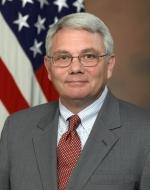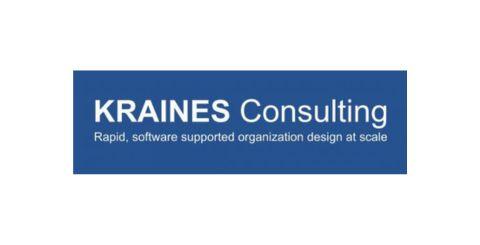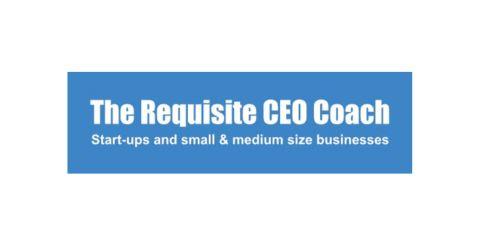Synergies of RO with the the World`s Largest Six Sigma Project
- There's something interesting about the warfighting army structure on the left. The right hand side is the non war fighting army. How do you get it efficient and effective to support that side? You've got to have someone come in and force it.
- Excessive overhead, people working at the wrong levels, et cetera. Customers said there was a whole layer that didn't add value. We decided to do shared staff and shared services. And we saved a number of spaces by consolidating.
- We took about 140 to 150,000,000 out a year in operating costs from just that just the overhead. Now we're down at the operating level and we'll make another pass through looking for some more additional resources.
Speaker A But let me give you a little history. This is how we've operationalized it. And then Steve is going to talk about the Ro engagements itself. But this all came about, you might think, from 19...
Transcript of the presentation video
NOTE: This transcript of the video was created by AI to enable Google's crawlers to search the video content. It may be expected to be only 96% accurate.
Speaker A But let me give you a little history. This is how we've operationalized it. And then Steve is going to talk about the Ro engagements itself. But this all came about, you might think, from 1973 to about 1999, 2000. Why didn't do and why didn't anyone do anything about this? Well, I would say the army was on an optimization curve. The war fighting side of the army, the equipment we buy, the doctrine, the processes, the development of the people. That's very innovative. In fact, it reinvents itself about twice a generation. In fact, it's very much like business. I go around and talk to a lot of business groups and I say, you've got a 21st century war fighting army supported by 21st century industry, but generated by a mid 20th century business structure. And that's where we've decided to go, the mid 20th century business structure. But you have to have somebody to understand that in the year 2000, we got a Secretary of the army named Tom White who'd come from private industry, the first industrial business person we'd have as Secretary of the army in about 25 years. We get lawyers, we get politicians, we get lobbyists, we get academics, all very good people, all who bring a lot of different strengths to the business, but they don't look at the business like a business person would. And Tom White really started Steve and I, as pro bono members of the Army Science Board on this journey to look at the business structure. And then Tom White left, and he was replaced a few years later by Dr. Fran Harvey, also a business person, who really propelled us on our current journey, asked me to do this job, really was instrumental in socializing this with the uniform leadership. And so that's where we are right now. And this is the construct of what we're trying to do in business transformation. And you see, I haven't put labels down there. I didn't put Ro. I didn't put Lean. Six Sigma. I'm trying to be a little more generic than that. And look at this swirl, which it really is between process structure and situational awareness or knowledge management or information, if you will, with an alignment function in the center. Some atmospherics, I think you'll agree with performance measurement, risk management and change management and then some. I think accelerators, like the army values, we're not a business. We don't have an ROI. We are loyal in a lot of ways, like a religious structure to a set of values as opposed to certain metrics. And then professional development increase in the business acumen of the workforce, both military and civilian, as a real accelerator. But this is the basic model we have. And it ought to be moving, it ought to be dynamic. You have to do everything at once. I would just tell you, if it was 1973 again, I would do essentially what General Abrams did. I'd get the organization right first and then I'd look and see how the work is done through the processes. I'd remove waste from the processes, I'd reduce variability in the processes that remain. I'd lace it all with situational awareness so I knew what was going on, and then I'd develop the workforce to optimize it. That's what I'd like to do. In the year 2007, we don't have the luxury of the world stopping the war, stopping the nasty people out there, stopping doing what they're doing. We can't do that. It's too fragile to stop everything. So we really had to start everything all at once. And I would say it's about a three to seven year journey. We will have kicked it off and the next administration. One of the challenges in a political environment is you change leadership on the political side at least every eight years in the United States, and on the military side, about every four years. So how do you do a three to seven year change management exercise? When the person who's finished, who started it is by definition not going to be there, and the person who finishes it is by definition not there at the start. And that's one of the things we're working through right now, and I think we've got some real traction on it. But this is the model for business transformation in the army. And Steve's going to talk about Ro specifically, and then I'm going to relate the rest of it.
Speaker B Okay, where did structure come from? I talked about the Tokugawa, and Rod talked about that when he looked at Rio Tinto. Elliot came over to look at the army structure. There's something interesting about the warfighting army structure on the left. It's had seven levels for a long, long time. And there's something about combat where you don't tolerate incompetence, non value adding roles, staff mucking about in your business because you die. And so we have a notion of adapt or die. And that organization has maintained that ability and capability over the years. It's been right, and it has been right for a long time. And people screw around with it and try to take a layer out and the layer comes back in because there's work that needs to be done. And so it has those seven levels, and you'll see in a minute we've had to add level eight. There's some interesting things about complexity that are occurring, but it's on the left hand side. The right hand side is the non war fighting army. Now, like any organization, layers creep in. We have a problem person, so we assign a deputy. We have a difficult personality, so we take the work away and sign it to someone else. We have a special project team. They never go away. They morph. We've still got quality circles and TQM, they just morph into something else and they never die. You get roles at it down there, you get new functions at It. Nothing ever happens, you get unclear. Nobody here has unclear roles and accountabilities, right? Especially at the headquarters level. What do you do? I oversee very precise definition. What does that mean in terms of so we get all that. You get overlap. You get rigid systems. Nobody wants to give up anything. And so that's what you face. And so the issue is, how do you get this lumbering beast over here as efficient? You don't die over here. You die on that side. And so these people just screw around and waste money. So how do you get it efficient and effective to support that side? And I wish we could assign them all on the other side. Okay, so this is Dr. Jack's right there. But here's what happens. We got some business principles that we've coined over the years, and you'll notice a couple of humorous ones. The hog won't butcher itself. Don't ask the organization to restructure internally, because it can't. It won't. It's too hard. You've got to have someone come in and force it. So we have two deputy undersecretaries of the army. One's called the Doucet for Pain and the other one's called the Doucet for Suffering. We inflict pain and suffering when we go through and restructure, and people don't like it because they're very comfortable in the way they've been doing it. And so we don't give them a choice. And so we've got some principles. Focus on the customer, things you've seen, because we're trying to get rid of the typical organizational pathologies, and you got to go in and break it apart. And everybody's working hard. Everybody thinks they're doing the right thing. No one comes to work to try to screw things up. It's just that they're doing the best they can. And it isn't always productively orchestrated so relentless attack on overhead. This is a study we just finished. This command is about 12 billion. It's one of five or six. We're working on about 50,000 people, maybe 35,000 contractors in addition. So it's pretty good size. And we were trying to say blurring of responsibilities, flawed economic model. We're trying to get $12 billion to give us $14 billion worth of services. Wasn't going to work. You can squeeze people, but you can't even with the new math. Twelve doesn't equal 14. Excessive overhead, people working at the wrong levels, et cetera. And inattentive to customer needs. Government agencies are a customer serve you? You got to be kidding. Okay, so what do we do? We went and talked to the customers. Customers gave us some interesting feedback across the board. They said there was a whole layer that didn't add value. In fact, when you said, would you pay for that service? No, not only would I not pay for that service, they ought to pay me to have to go through them because they create work. So we then decided to have a value proposition. We said, what do people do at the higher levels? Look, our operating assumption is generally people working at level four and below, and that's a depot, a schoolhouse, a brigade. They're probably effective. Everybody above level four is probably suspect in terms of their value adding. That's our operating assumption. Show me what you do that adds value. Because probably what you're doing is just checking on someone else or asking for data, calls, et cetera. So we went in to attack the overhead. First thing we had to do was, well, what do people at level seven, six, five and four, what should they be doing? And I'll show you in a minute level eight, because that's the work that they should be doing versus what are they doing now, everybody loves to tell the operator at the front line what to do, because it's fun. It isn't fun doing all that stuff on top in terms of governance and resourcing and policy oversight, external affairs. You don't like to go testify on the Hill in terms of that. So that was our value proposition. We sorted it out, and then we said, now, how come, if you haven't rewritten the policy since 1983, why does it take eight people? What do you do every day? And we found out they go to meetings. Meetings start at 08:00. They go to 05:00. You can't get any work done between eight and five because everybody's in meetings. What do you do at meetings? You talk to each other. Who's accountable for an outcome? Nobody. And so we said, all right, we're going to tackle that kind of stuff. All right, here's an example. We had an Environment Command. And because the Environment Command was in the US. We had to have one in Europe and Korea. I said, Why can't these guys develop environment policy and do environmental work worldwide? Well, they're in the US. I said, It's a global world. Why can't they project worldwide? Why do I have to duplicate it over here and over there? You can see what we did. We said, not going to do that anymore. Going to change the business model. We're going to have one Environment Command servicing the world, and I don't care where it's located. We're moving them all out of Washington anyway, to San Antonio. And we saved about a number of spaces by consolidating. This is just overhead. I'm not talking about the people actually do environment work. I'm talking about the overhead that are checking on the people doing the work. Now, this is a $12 billion command. We did two more things we decided to do shared staff and shared services. Why do you do that? You want to get more efficient. So each of our regions and this is the Installation Management Command they manage all of the installations worldwide. A typical post or camper station. Every installation in every region had all of these things on the left and right. Don't worry about the acronyms. You got to learn a new language. When you work with the government, but everybody had one of those and they duplicated it everywhere. And so we said, well, what do you people do? And these people are all checking on the other person. I said, no, we're not going to do that anymore. We're going to take the staff, 190 people per region down to three or four. What am I going to do? I said, you're going to do leadership. You're going to get your staff. And by the way, you're not going to be geographically dispersed. You're going to all be in one building and you're going to get your staff from one place. And we're moving a bunch of things. And so they had this construction build on, they wanted this big building. And I said to one of the generals, well, you don't need a building if you only got three people, you need a desk. And so we pull that all apart in terms of those kinds of issues. Now, we're not real popular, so we promoted the regional directors to two stars. We said, your job is to deal with your customer and a colleague relationship is a different relationship than a subordinate. So since your customers are all two star generals, then you need to be a two star. So we promoted them all and said, you start dealing with your customer because you're supposed to be satisfying your customer. And so we took all of this stuff and we consolidated it all into one area and said, going to have one legal shop, I'm going to have one HR shop, one safety shop, I'm not going to duplicate it in every command. And they're all going to be in the same building and they're going to provide services across that. We're in the middle of rolling that out and you'll see in a minute here that's a fair number of people that you can and here's the effect. Notice the staff pre post in the regions, 200 down to three or four. They love me in the regions. This is the first pass we're going to go back for pass two. They're still fat at the top. So you take what you can get and then you go back when there's inflicted a little bit more pain. So that's kind of what we did. We took about 140 to 150,000,000 out a year in operating costs from just that just the overhead. That's not touching any of the operating elements, that's just the overhead. Now we're down at the operating level and we'll make another pass through looking for some more additional resources.
Major organizations and consulting firms that provide Requisite Organization-based services





